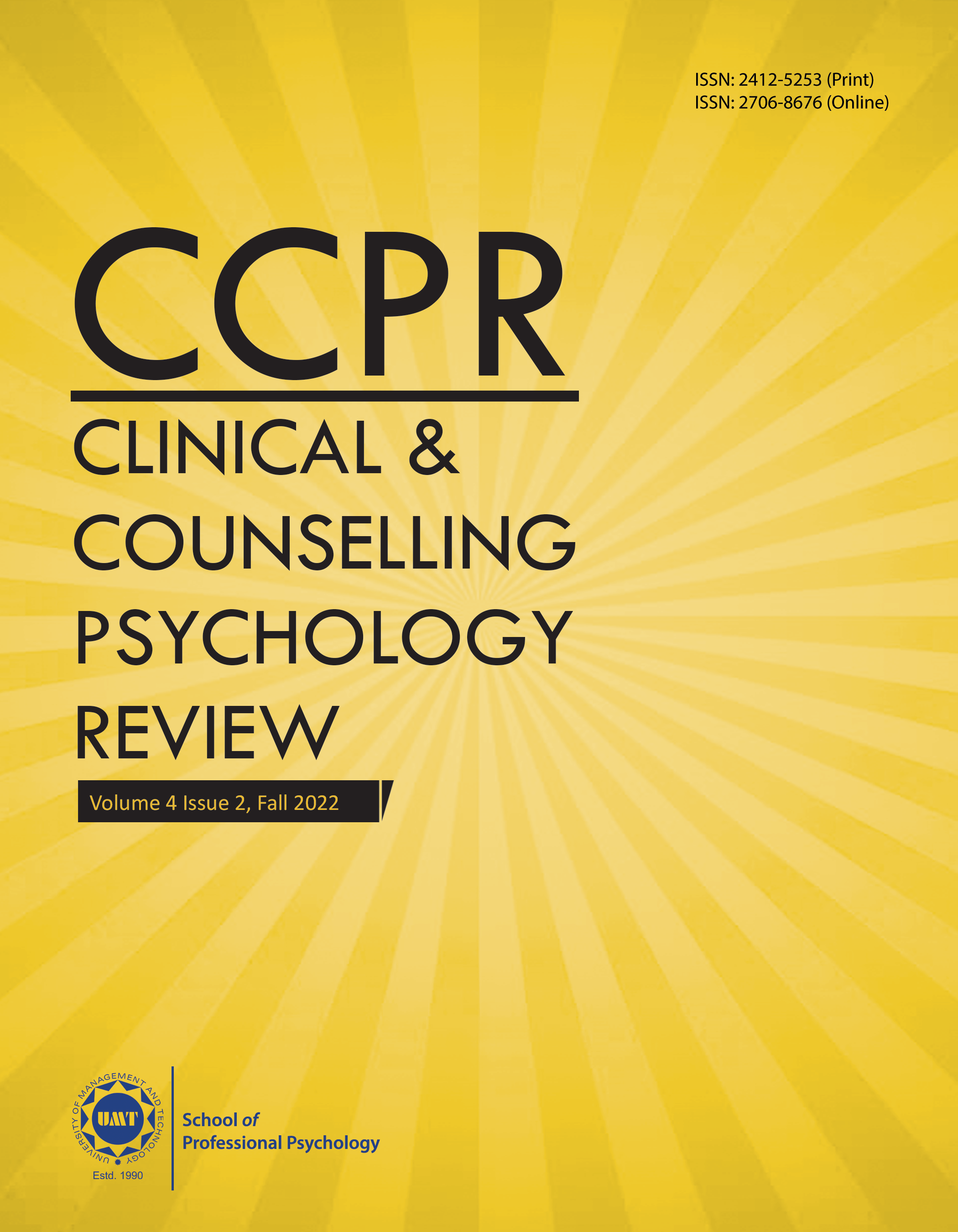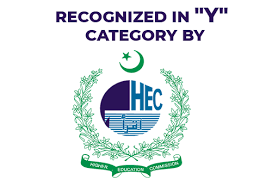Emotional Abuse, Bullying and Forgiveness among Adolescents
Abstract
 Abstract Views: 174
Abstract Views: 174
The current research was conducted to assess emotional abuse, bullying and forgiveness among adolescents. A sample of N =147 adolescents (n = 68 boys and n =79 girls) aged 13-17 years, (M = 15, SD = 1.35) were recruited through convenience sampling technique. The Demographic Form, Child Adolescent Bullying Scale (CABS), Emotional Abuse Questionnaire (self-developed), and Transgression-Related Interpersonal Motivations Inventory (TRIM-18) were used to assess study variables. Chi-Square, Pearson Product Moment correlation, simple linear regression, and Independent sample t-test was used to analyze the data. Results revealed that non-significant gender differences were found in the study variables. Findings state that high levels of bullying and older participants showed high benevolent motivation. Girls were more likely to be emotionally abused for their appearance and boys are more likely to confront their bullies and feel worthless/inferior as a result of emotional abuse. Limitations and recommendations for research are also discussed.
Downloads
References
Egan, L. A., & Todorov, N. (2009). Forgiveness as a coping strategy to allow school students to deal with the effects of being bullied: Theoretical and empirical discussion. Journal Social and Clinical Psychology, 28(2), 198-22.https://doi.org/10.1521/jscp.2009.28.2.198
Wikipedia contributor. (2020). Psychological abuse. https://en.wikipedia.org/w/index.php?title=Psychological_abuse&oldid=1026818829
Al-Raqqad, H. K., Al-Bourini, E. S., Al Talahin, F. M., & Aranki, R. M. E. (2017). The Impact of School Bullying on Students' Academic Achievement from Teachers Point of View. International Education Studies, 10(6), 44-50. https://eric.ed.gov/?id=EJ1144634
Evans, C. B., & Smokowski, P. R. (2016). Theoretical explanations for bullying in school: How ecological processes propagate perpetration and victimization. Child and adolescent social work journal, 33(4), 365-375. https://doi.org/10.1007/s10560-015-0432-2
Souders, B. (2020, September 14). What is Forgiveness and What Are the Benefits?. Positive Psychology. https://positivepsychology.com/forgiveness-benefits/
Malik, S., & Kaiser, A. (2016). Impact of emotional maltreatment on self-esteem among adolescents. JPMA. The Journal of the Pakistan Medical Association, 66(7), 795-798. https://bit.ly/3wds9HO
Khawar, R., & Malik, F. (2016). Bullying behavior of Pakistani pre-adolescents: Findings based on Olweus questionnaire. Pakistan Journal of Psychological Research, 23-43. https://bit.ly/3zckQC5
Barcaccia, B., Pallini, S., Baiocco, R., Salvati, M., Saliani, A. M., & Schneider, B. H. (2018). Forgiveness and friendship protect adolescent victims of bullying from emotional maladjustment. Psicothema, 30(4), 427-433. http://www.psicothema.com/pdf/4504.pdf
Strout, T. D., Vessey, J. A., DiFazio, R. L., & Ludlow, L. H. (2018). The Child Adolescent Bullying Scale (CABS): psychometric evaluation of a new measure. Research in nursing & health, 41(3), 252-264. https://doi.org/10.1002/nur.21871
McCullough, M. E., Root, L. M., & Cohen, A. D. (2006). Writing about the benefits of an interpersonal transgression facilitates forgiveness. Journal of Consulting and Clinical Psychology, 74, 887–897. http://dx.doi.org/10.13072/midss.682
Abbas, N., Ashiq, U., & Abbas, F. (2014). Assessment of School Bullying and Contributing Factors A Case of Punjab (Pakistan). Journal of Applied Environmental and Biological Sciences, 4(7), 241-251. https://bit.ly/2Smb6Vh
Quintana-Orts, C., & Rey, L. (2018). Traditional bullying, cyberbullying and mental health in early adolescents: Forgiveness as a protective factor of peer victimization. International journal of environmental research and public health, 15(11), 2389. https://doi.org/10.3390/ijerph15112389








